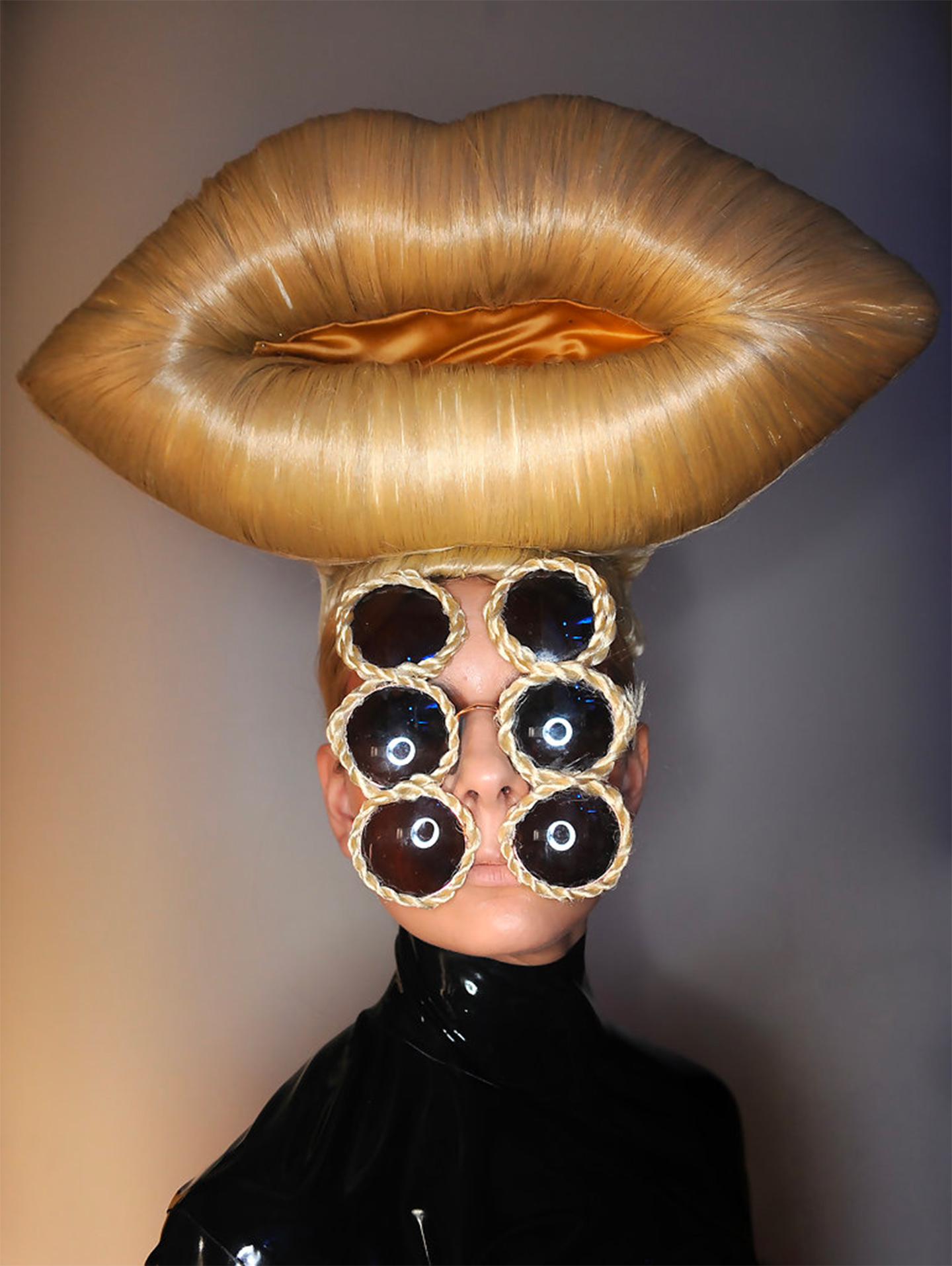





Our fashionable closets are not the only way to communicate our identity. As you walk through the vibrant world of colourful wigs, hair tools, photographs, and even garments made out of hair at the Des cheveux et des poils (Hair & Hairs) exhibition, your mind is opened to new perspectives.

Charlie Le Mindu, Coiffure Blonde lips, Collection Printemps-Été 2010 dite Girls of paradise, Fashion Week au Royal Festival Hall, 19 septembre 2009, Londres © Samir Hussein / Getty Images. Courtesy of Musée des Arts Décoratifs
As you enter the Musée des Arts Décoratifs in Paris, you’ll be mesmerised by the intricate connection between hair and the body, questioning how this unique and valuable material can further inspire fashion, identities, and cultures.

Lodewijk van der Helst, Portrait of Adriana Hinlopen, 1667. Amsterdam, Rijksmuseum © Rijksmuseum, Amsterdam. Courtesy of Musée des Arts Décoratifs
Here are some exhibition topics you don’t want to miss out on.

Marisol Suarez, Braided wig © Katrin Backes. Courtesy of Musée des Arts Décoratifs
What does hair represent in men? A journey through centuries
From a fully nude frontal drawing by Jean-Jacques Lequeu to a video montage of what our ancestors’ bodies looked like underneath their constructed garments, this dedicated section highlights the normalisation of body hair for men.

The representation of body hair in history and media is crucial and has changed how we think about our bodies and masculinity. Today, a man with hair is considered attractive, strong, and manly. However, during the end of the 18th century, hairless bodies and faces were highly sought after.
What is the history of hair tools? All the craziest crimpers, rollers and devices women have used to style their hair

Des cheveux et des poils (Hair & Hairs) exhibition at the Musée des Arts Décoratifs in Paris. Courtesy of the author
One of the most fascinating segments features hair tools and salons. Old hair dryers or curling irons focus on how different identities and cultural movements influenced their development.

Antoine de Paris salon c.1932. Photo: Marcel Bovis. Courtesy of Musée des Arts Décoratifs
It’s undeniable that technology and science have greatly influenced the evolution of hairstyles and trends.

Hair Chakra, 2017. Coiffure : Nicolas Jurnjack © Photo: Nick Norman. Courtesy of Musée des Arts Décoratifs
Can you imagine a modern-day fashion show backstage without blow dryers, curling irons, and straighteners?

Project Hair by Nicolas Jurnjack 2014 © Photo: Nick Norman. Courtesy of Musée des Arts Décoratifs
Remember Martin Margiela’s wig coat for spring-summer 2009? Discover designers’ curious obsession with crafting garments from hair extensions and discover how the wig got big in fashion
Perhaps the most impressive part of the exhibit is the one including garments made from hair. A significant portion is dedicated to these extravagant pieces, with some grand wigs nearby.

Maison Margiela, Prêt-à-porter Printemps 2009, 2008 © Giovanni Giannoni. Courtesy of Musée des Arts Décoratifs
From Martin Margiela’s coat made of wigs to the over-the-top editorial hairstyles and photographs, it’s amazing how hair can develop new forms of creativity and inspiration for fashion.

Des cheveux et des poils (Hair & Hairs) exhibition at the Musée des Arts Décoratifs in Paris. Courtesy of the author
When you first view some garments, it’s hard to believe they are made from hair, yet some are exhilarating. It makes you wonder about the future of fashion and how the industry can take something so simple yet often underrated and turn it into something beautiful and innovative.
Camryn Pessin
MA student in Fashion Styling, Creative Direction & Digital Content, Paris


